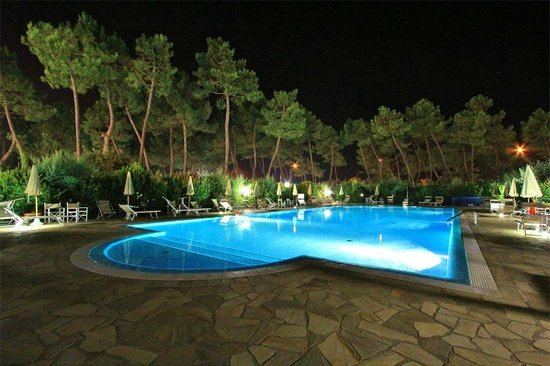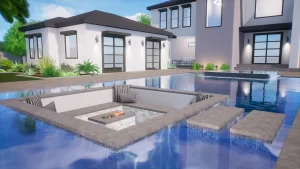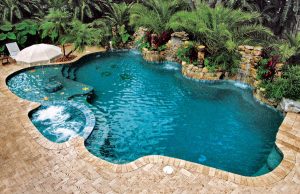Certain types of trees require much upkeep to keep them from growing uncontrollably. Others are notorious for causing a mess, which means you’ll constantly be scooping debris out of your backyard pool or sweeping the area around your pool. Additionally, some trees can present safety hazards, especially if young children like to play outside.
If you want to add a tree to your pool landscaping, these are the trees to avoid.
-
Trees that will make a lot of mess
Proper pool maintenance is crucial for clean water and safe swimming. However, certain trees can increase the level of care required.
When maintaining a pool area, leaf drop is an essential factor to consider. Coniferous trees like pines, firs, and spruces can be challenging to clean up after. The thin needles of these trees can easily slip through the netting of a skimmer and create hazards for people walking around the pool barefoot.
Pine trees release a sticky sap that makes cleaning difficult.
Carefully consider berry-producing trees, as they can stain pool patios, clog filters, and attract birds, increasing pool maintenance.
Planting cottonwoods is also not recommended as they produce an abundance of cotton-like seeds that can create a mess.
-
Trees that require high maintenance
Fast-growing trees require frequent pruning to control their size.
The Leyland cypress is a type of plant that is commonly used for hedging. It’s important to prune them at least once a year, but it’s best to do it twice. They can become too big if you don’t take care of them regularly. The costs can quickly increase since you’ll likely need to hire a professional to maintain them.
As trees grow more prominent, they tend to lose their lower growth, and the internal growth can become cluttered. Poplars and willows are two other examples of trees unsuitable for planting near a house or pool.
-
Trees that risk your safety around the pool
Considering trees regarding pool safety is essential, as they can pose several risks. For example, sweet gum trees can drop spiky seed balls that can be painful to step barefoot.
Similarly, trees like acacias can have spiky trunks, while yucca and holly trees have spiky leaves. Planting these trees away from areas where people will be relaxing in swimwear is best to ensure maximum safety. Then there are toxic trees – including ones with poisonous berries, such as yew. Avoiding these will make the area more family-friendly.
It’s important to note that certain trees are more likely to drop their branches than others. Therefore, it’s best to avoid planting these types of trees near a pool area or even in a backyard altogether. Examples of such trees include tulip trees and poplars.
-
Invasive Rooting Trees
Most large tree species, such as maples, oaks, and sycamores, should not be planted near a pool. This is because their roots can be highly invasive and cause damage to concrete walls, foundations, and pool plumbing, leading to cracks and leaks.
Similarly, trees like silver maples, American elms, and poplars can pose a risk. Willow trees are another example, as their root system constantly seeks out water.
Protect your pool by avoiding trees with invasive roots near the pool. Ensure the swimming pool has loungers and steps for relaxation and safety.
-
Shade Trees
A tree or two in your backyard can provide a shaded and private spot. However, some trees can eventually darken your space, making it less inviting as they mature. Eucalyptus trees are a perfect example of this.
These trees are not only untidy, shedding their bark and leaves, but their fast growth can alter the ambiance of your pool area, blocking sunlight and obstructing views.
In some cases, choosing a patio shade solution over planting a tree for shade may be more practical, as the former can offer greater flexibility.
Although having some shade can be advantageous, excessive shade could ruin the overall atmosphere of your outdoor area.




